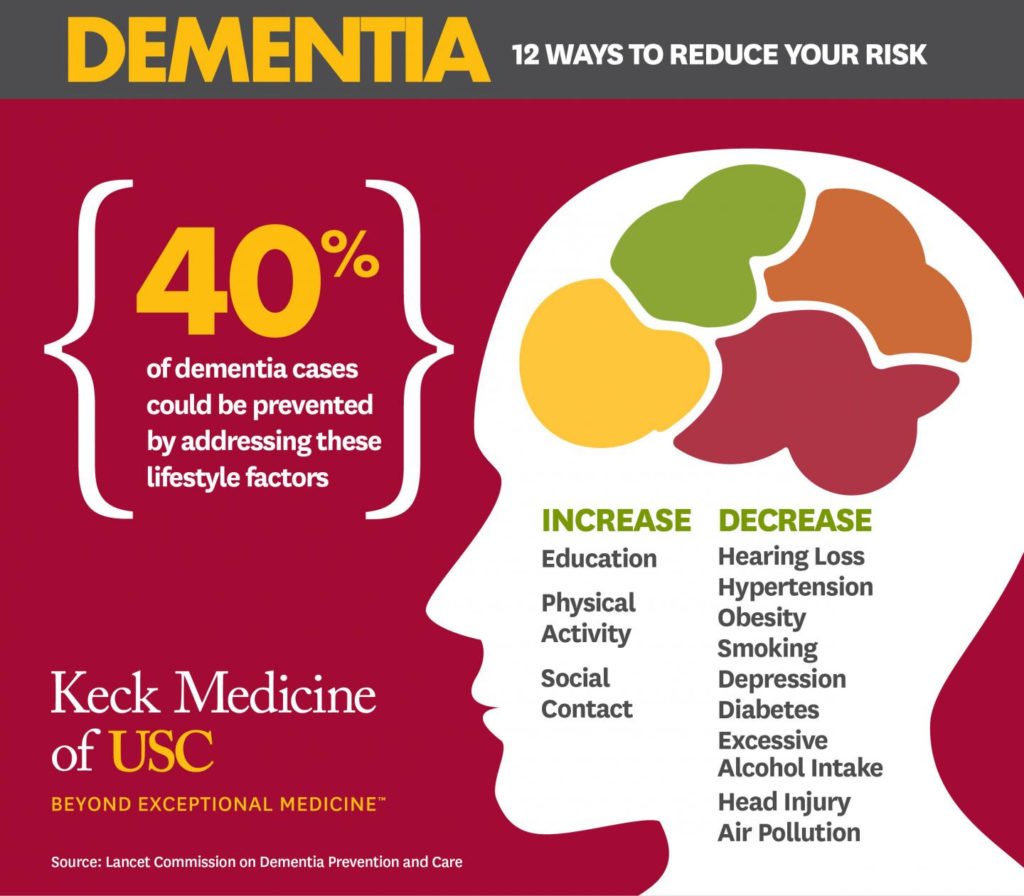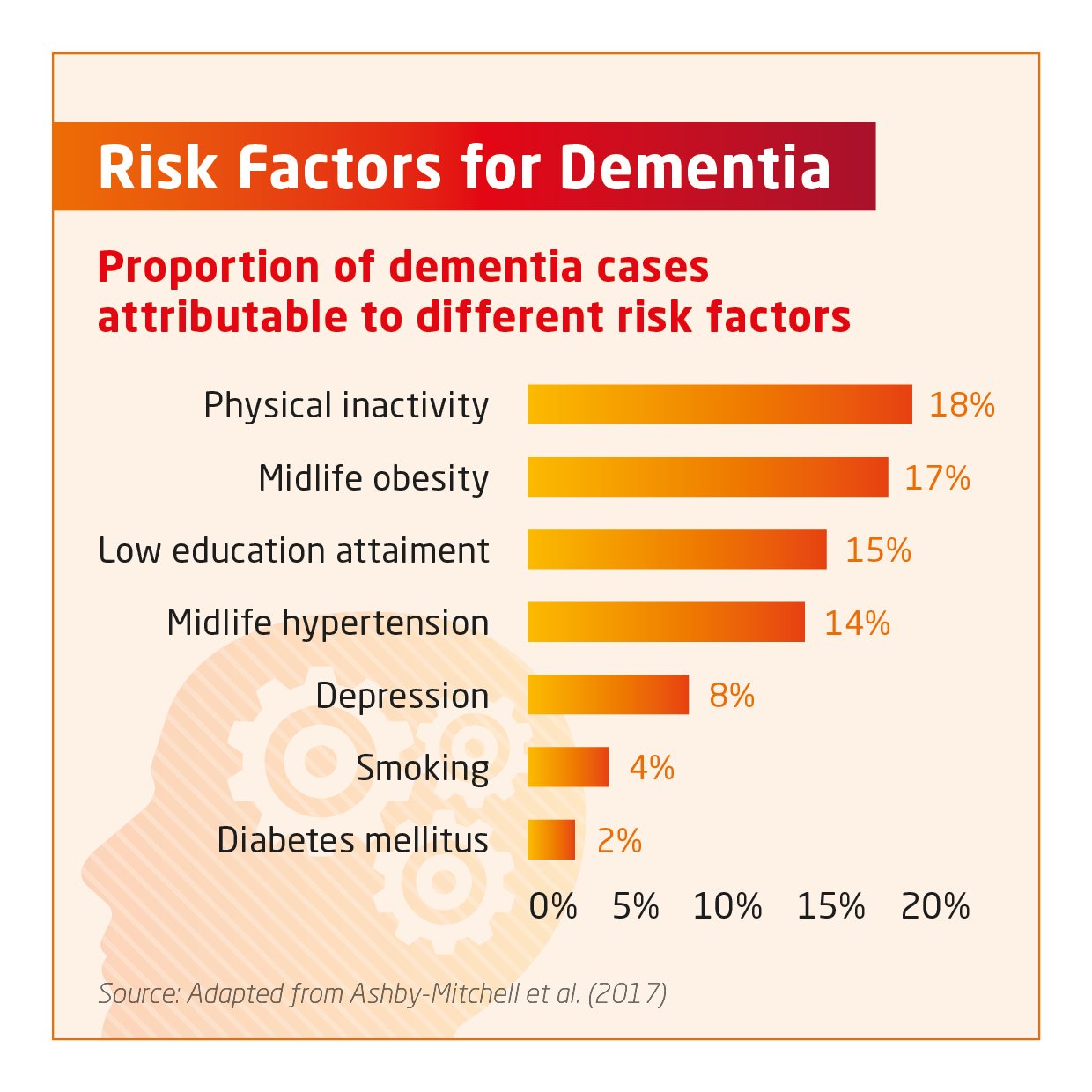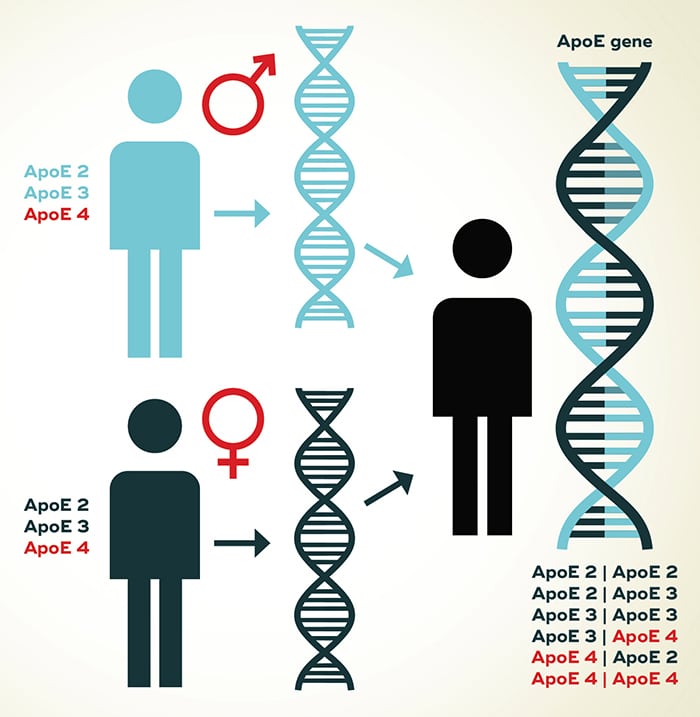Alzheimer’s Treatments & Prognosis
At present, there is still no cure for Alzheimers disease despite decades of research, but there are medicines and specialist therapies available that can help reduce symptoms and slow disease progression. Alzheimers is a progressive condition, meaning that its symptoms get worse over time and cannot be reversed. As symptoms worsen, people diagnosed with Alzheimers may require additional support with everyday activities such as shopping, cooking, cleaning and ultimately personal-care and hygiene too.
Medicines used to relieve the symptoms of Alzheimers disease fall broadly into two classes. The first are acetylcholinesterase inhibitors such as donepezil or galantamine. These medicines increase levels of a neurotransmitter in the brain called acetylcholine, allowing better communication between neurons. The second medicine commonly used is memantine, which works by reducing the amount of another neurotransmitter in the brain called glutamate, which otherwise would suppress neuronal activity further. Memantine is usually used for more advanced stages of Alzheimers, or those who cannot tolerate AchE inhibitors due to side-effects.
Can Dementia Be Prevented
Although dementia cant be prevented, living a health-focused life might reduce risk factors for certain types of dementia.
Keeping blood vessels clear of cholesterol buildup, maintaining normal blood pressure, maintaining healthy blood sugar levels, staying at a healthy weight basically, staying as healthy as you can can keep your brain fueled with the oxygen and nutrients it needs to function at its highest possible level. Specific healthful steps you can take include:
- Follow a Mediterranean diet, which is one filled with whole grains, vegetables, fruits, fish and shellfish, nuts, beans, olive oil and only limited amounts of red meats.
- Exercise. Get at least 30 minutes of exercise most days of the week.
- Keep your brain engaged. Solve puzzles, play word games and try other mentally stimulating activities. These activities may delay the start of dementia.
- Stay socially active. Interact with people, discuss current events, and keep your mind, heart and soul engaged.
The Key To Alzheimers Prevention: Fixing The Roof
Knowing the range of risk factors and how they can link to Alzheimers is critical, as is catching and preventing Alzheimers early.
In our experience, the sooner the diagnosis, the better the outcome.
In fact, these risk factors are generally the ones used in the Bredesen Protocol and other prevention approaches to AD, stopping Alzheimers progression in its tracks or even before it starts.
Want to prevent Alzheimers using a plan that works without breaking the bank? Get our guide to the Bredesen Protocol on a budget for as little as $5.
Read Also: What To Say To Alzheimer Patients
Study Details And Key Findings
For the study, researchers collected data from 378,615 participants in CDC‘s 2018 Behavioral Risk Factor Surveillance System. For each risk factor, they extracted relative risks from recent meta-analyses.
The study’s self-reported race and ethnicity data identified 6,671 American Indian and Alaska Native participants, 8,043 Asian participants, 29,956 Black participants, 28,042 Hispanic participants, and 294,394 white participants.
According to study co-authors Roch Nianogo of the University of California, Los Angeles, and Deborah Barnes of the University of California, San Francisco, eight modifiable risk factors were associated with 36.9% of Alzheimer’s and dementia cases. For each of the eight factors, the population-attributable risk was:
- Hearing loss: 2.3%
- Physical inactivity: 11.8%
- Midlife obesity: 17.7%
Among all participants, midlife hypertension and midlife obesity were the most prevalent risk factors. However, prevalence varied across race and ethnicity.
In addition, risk factor association with Alzheimer’s and dementia varied by race and ethnicity. For example, midlife obesity had the highest association with Alzheimer’s and dementia among Black , American Indian and Alaska Native , and white populations.
Among Hispanic participants, low educational attainment was the most prevalent risk factor , while physical inactivity was the highest association in Asian participants .
Subtypes Of Alzheimers Disease

Alzheimers is the most common out of all of the types of dementia, and its characteristics can be far-ranging. When looking for root causes, its helpful to break the disease down into subtypes according to Dr. Bredesens approach.
The second word in quotes found in each subtype comes from Ayurvedic medicine, which has touched on these points for many years.
Bredesen describes the 6 subtypes of Alzheimers as follows:
Many patients ask: what is the most common cause of dementia? The most common cause of dementia is likely inflammation, but many underlying triggers compound on one another to lead to the development of this disease.
Various triggers from head injuries to insulin issues can contribute to an increased risk of dementia, and its common for patients to fall into more than one subtype.
Also Check: How To Talk To A Parent With Dementia
What Increases The Risk For Dementia
- AgeThe strongest known risk factor for dementia is increasing age, with most cases affecting those of 65 years and older
- Family historyThose who have parents or siblings with dementia are more likely to develop dementia themselves.
- Race/ethnicityOlder African Americans are twice more likely to have dementia than whites. Hispanics 1.5 times more likely to have dementia than whites.
- Poor heart healthHigh blood pressure, high cholesterol, and smoking increase the risk of dementia if not treated properly.
- Traumatic brain injuryHead injuries can increase the risk of dementia, especially if they are severe or occur repeatedly.
Chronic Diseases Associated With Vascular Injury
Chronic diseases associated with vascular injury can link into subtype 4, or vascular Alzheimers. These may include:
- High blood pressure
- High cholesterol
The National Institutes of Health point out that having cardiovascular risk factors like blood pressure and cholesterol levels in midlife may lead to an increased risk of dementia down the road.
Recommended Reading: How Does Delirium Differ From Dementia
What Are The Signs And Symptoms Of Dementia
Because dementia is a general term, its symptoms can vary widely from person to person. People with dementia have problems with:
- Reasoning, judgment, and problem solving
- Visual perception beyond typical age-related changes in vision
Signs that may point to dementia include:
- Getting lost in a familiar neighborhood
- Using unusual words to refer to familiar objects
- Forgetting the name of a close family member or friend
- Forgetting old memories
- Not being able to complete tasks independently
Are There Different Types Of Dementia
Dementias can be divided into three groups:
- Reversible dementia-like symptoms caused by other illnesses or causes.
Primary dementia
Types of primary dementia include:
Dementia due to other diseases and conditions
Other causes of dementia include:
Dementias due to reversible causes
Some conditions can cause dementia-like symptoms that can be reversed with treatment, including:
Also Check: Are There Stages Of Dementia
What Are The Risk Factors For Dementia
Risk factors for dementia include:
- Age: This is the strongest risk factor. Your chance of dementia increases as you age. Most cases affect people over the age of 65.
- Family history: If you have biological parents or siblings with dementia, youre more likely to develop dementia.
- Down syndrome: If you have Down syndrome, youre at risk of developing early-onset Alzheimers disease by middle age.
- Poor heart health: If you have high cholesterol levels, high blood pressure, atherosclerosis or smoke, you increase your risk of dementia. These health problems, as well as diabetes, affect your blood vessels. Damaged blood vessels can lead to reduced blood flow and strokes.
- Race and ethnicity: If youre a Black person, you have twice the risk as a white person for developing dementia. If youre a Hispanic person, youre 1.5 times more likely than a white person to develop dementia.
- Brain injury: If youve had a severe brain injury, youre at a higher risk for dementia.
Risk Factors For Dementia
Researchers have identified several risk factors that affect the likelihood of developing one or more kinds of dementia. Some of these factors are modifiable, while others are not.
Age. The risk of Alzheimer’s disease, vascular dementia, and several other dementias goes up significantly with advancing age.
Genetics/family history. Researchers have discovered a number of genes that increase the risk of developing Alzheimer’s disease. Although people with a family history of Alzheimer’s disease are generally considered to be at a heightened risk of developing the disease themselves, many people who have relatives with Alzheimer’s disease never develop the disease, and many without a family history of the disease do get it.
In most cases, it is impossible to predict a specific person’s risk of the disorder based on family history alone. Some families with Creutzfeldt-Jakob disease, Gerstmann-Sträussler-Scheinker syndrome, or fatal familial insomnia have mutations in the prion protein gene, although these disorders can also occur in people without the gene mutation. Individuals with these mutations are at significantly higher risk of developing these forms of dementia.
Abnormal genes are also clearly implicated as risk factors in Huntington’s disease, FTDP-17, and several other kinds of dementia.
Many people with Down’s syndrome show neurological and behavioral signs of Alzheimer’s disease by the time they reach middle age.
Don’t Miss: What Can Slow Down Alzheimer’s
Factors That Increase Your Risk For Alzheimers Disease
After reading through the subtypes, youre aware there are many facets to assessing risk and type of Alzheimers.
What are the risk factors of Alzheimers disease? The 14 most well-known risk factors of Alzheimers disease include:
Patients with one or more of these risk factors are at a higher odds of developing Alzheimers or dementia. Here are the details on each category.
Risk Factors For Alzheimers

For many people approaching retirement, dementia and Alzheimers are mysterious and concerning possibilities. For many years, the cause of this disease and risk factors were not well-known. However, weve made significant progress in assessing risk and treatment.
While there is not yet a cure for Alzheimers or dementia, certain behaviors, lifestyle choices, and other factors can increase the likelihood of developing this disease.
Here are 13 risk factors for Alzheimers that you should know.
Want to prevent Alzheimers using a plan that works without breaking the bank? Get our guide to the Bredesen Protocol on a budget for as little as $5.
Also Check: Working With Alzheimer And Dementia Patients
Dementia Risk Factors And Prevention Dementia Risk Factors And Prevention
Some things can increase your risk of getting dementia, including your age, genes and lifestyle. There are also ways you can reduce your risk.
Learn more about alternative therapiesLearn more about alternative therapies .
Some alternative therapies, like cannabis oil , might benefit people with dementia. They work by treating the conditions related to dementia, such as sleep problems or agitation. However there are alleged alternative therapies, like coconut oil, that don’t help or are harmful.
Risk Factors Change Based On Age
The study used a diverse cohort of participants and followed participants over ten years. They specifically looked at the risk of dementia based on cardiovascular problems and age. They included participants that were a part of the Framingham Stroke Risk Profile. The study included almost 5,000 participants.
They looked at the participants health problems, such as high blood pressure and diabetes, and then the number of participants who developed dementia during the follow-up.
Researchers found that the risk associated with different disorders changed based on participants ages.
The study authors noted the following highlights:
- At the age of 55, the most significant risk factors associated with developing dementia were systolic blood pressure and diabetes mellitus.
- At the age of 65, the most significant risk factor associated with developing dementia was heart disease.
- At the ages of 70 and 75, the most significant risk factors associated with developing dementia were diabetes mellitus and stroke.
- At the age of 80, the most significant risk factors associated with developing dementia were diabetes mellitus, stroke, and arrhythmia.
This information indicates that the risk factors vary between individuals and that preventive measures should take these factors into account. Study author Dr. Emer McGrath explained to Medical News Today:
Don’t Miss: How Do You Treat Alzheimer’s
Risk Factors You Can’t Change
The Alzheimer’s Association outlines risk factors toward Alzheimer’s, and dementia in general, that a person cannot change. These risk factors usually increase a person’s chance toward a diagnosis of dementia.
- Age: The greatest risk factor for dementia is getting older.
- Family History: People with parents, siblings, or children with dementia are more likely to develop it themselves, either because of environmental factors or genetics.
- Genetics: Some genes are linked to specific diagnoses, like Alzheimer’s disease.
Risk Of Alzheimers Dementia May Be Predicted With Help Of New Tool
Demographic data, imaging results, biomarkers of study participants help determine risk
Using demographic information, brain imaging test results and genetic biomarkers, researchers at Washington University School of Medicine in St. Louis have developed an algorithm that can help provide people who volunteer for studies of aging with information about the risk each faces of developing dementia due to Alzheimers disease.
Published Sept. 30 in the Journal of Alzheimers and Dementia, the findings from researchers with the universitys Knight Alzheimer Disease Research Center may help study participants learn more about what their futures hold, in terms of risk for dementia related to Alzheimers. The research also eventually may help others determine whether they face risk of the debilitating disorder.
Hartz and co-principal investigator Jessica Mozersky, PhD, an assistant professor of medicine in the universitys Bioethics Research Center, examined the various factors that contribute to Alzheimers dementia, and they used that information to create an algorithm aimed at estimating an individuals absolute risk of developing early symptoms of dementia from Alzheimers. They developed the algorithm for use in a clinical trial to learn whether they could help volunteers participating in aging studies at the Knight ADRC better understand what biomarkers for disease they might have, and whether researchers then could evaluate participants eventual outcomes.
You May Like: What Can You Do To Help Someone With Alzheimer
Whats The Difference Between Dementia And Alzheimers Disease
Dementia is a description of the state of a persons mental function and not a specific disease. Dementia is an umbrella category describing mental decline thats severe enough to interfere with daily living.
There are many underlying causes of dementia, including Alzheimers disease and Parkinsons disease. Alzheimers disease is the most common underlying cause of dementia.
Cross Sectional Versus Longitudinal Studies
Studies with a longitudinal design are preferred over studies with a cross sectional design for several reasons. It is conceivable that information about risk factors may be systematically different between patients and controls. Patient data must come from a proxy, who might recall the medical history differently than a proxy of a control or the control himself. In addition, prevalence is determined by both the number of new cases over a given period of time, and by the duration of survival once patients have the disease. In analogy, findings of cross sectional studies can reflect the contribution a risk factor makes to developing dementia as well as to surviving after the dementia starts.
Another important issue in this respect is that risk factors may change over time. The impact of environmental factors, such as smoking, diet, physical activity, and vascular disease, may change over time both within an individual and across birth cohorts. Risk factors such as blood pressure change with ageing. Furthermore, the disease, once it has started, may in turn influence the risk factor. For example, the diet of a demented individual may change, when the person forgets to eat his or her meals on a regular basis. Therefore, the relationship between a risk factor and disease may differ depending on the age the risk factor is measured relative to the outcome.
Recommended Reading: How To Reverse Alzheimer’s Disease Naturally
What Medications Are Available To Manage Dementia
Drugs approved for the most common form of dementia, Alzheimers disease, include:
- Cholinesterase inhibitors, including donepezil , rivastigmine and galantamine .
- NMDA receptor antagonist memantine .
- Anti-amyloid antibody aducanumab .
Healthcare providers use these drugs to treat people with some of the other forms of dementia.
Cholinesterase inhibitors and the NMDA receptor antagonist affect different chemical processes in your brain. Both drug classes have been shown to provide some benefit in improving or stabilizing memory function in some people with dementia.
Cholinesterase inhibitors manage the chemicals in your brain that allow messages to be sent between brain cells, which is needed for proper brain function. Memantine works similarly to cholinesterase inhibitors except it works on a different chemical messenger and helps the nerve cells survive longer.
Aducanumab targets amyloid proteins, which build up into the plaques seen in the brains of people with Alzheimers disease.
Although none of these drugs appear to stop the progression of the underlying disease, they may slow it down.
If other medical conditions are causing dementia or co-exist with dementia, healthcare providers prescribe the appropriate drugs used to treat those specific conditions. These other conditions include sleeping problems, depression, hallucinations and agitation.
The Brain And Alzheimer’s Disease

When a person has Alzheimerâs, their brain changes. It has fewer healthy cells, and it gets smaller over time. Most of the time, the brain cells also form two types of flaws:
- Neurofibrillary tangles. These are twisted fibers inside brain cells that keep nutrients and other important things from moving from one part of the cell to another
- Beta-amyloid plaques. These are sticky clumps of proteins that build up between nerve cells instead of breaking down like they do in healthy brains.
Plaques and tangles damage the healthy brain cells around them. The damaged cells die, and the brain shrinks. These changes cause the symptoms of Alzheimerâs, such as memory loss, speech problems, confusion, and mood swings.
Brain cells affected by the disease also make lower amounts of the chemicals called neurotransmitters that nerves use to send messages to each other.
Scientists don’t know if these brain cell changes cause Alzheimerâs or happen because of it.
Read Also: How Young Can You Get Alzheimer’s